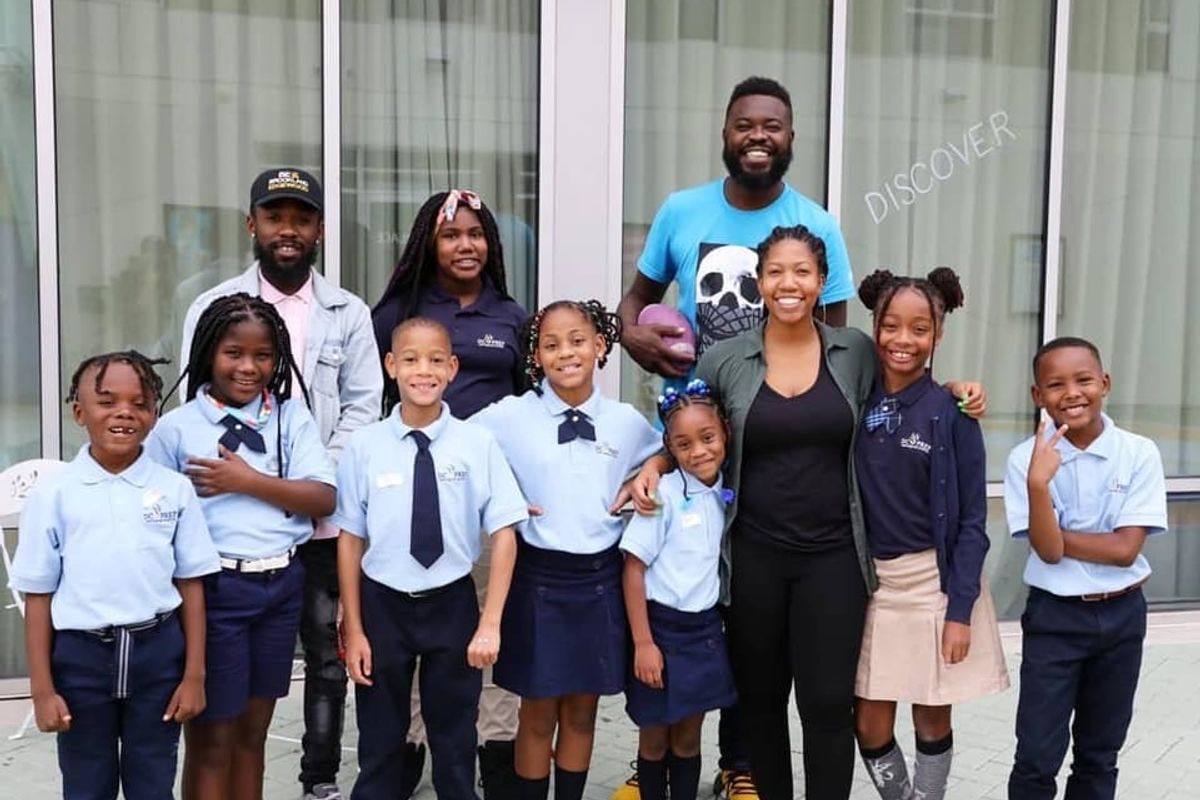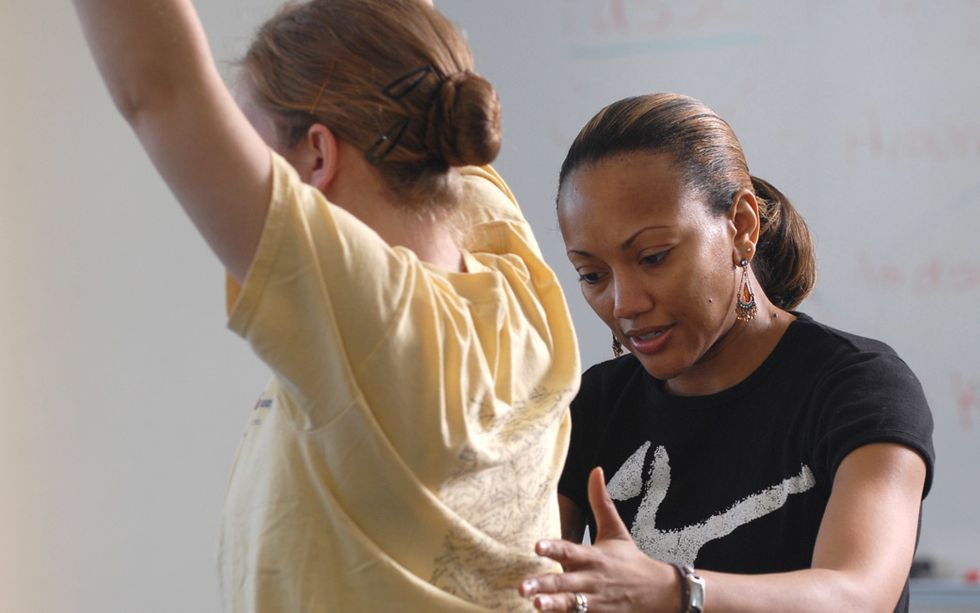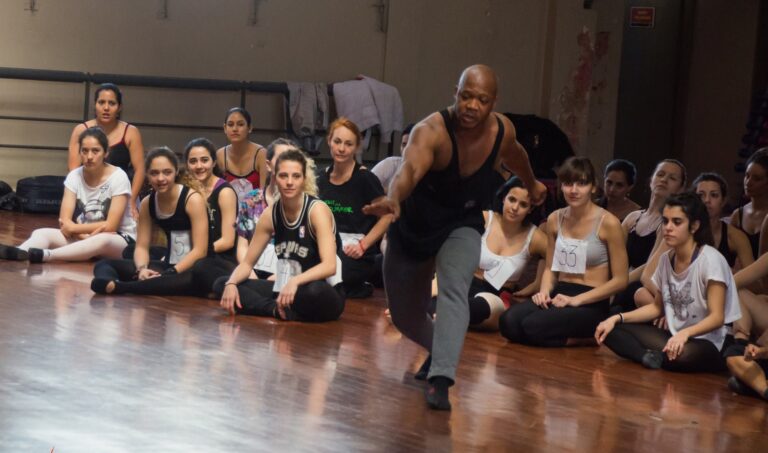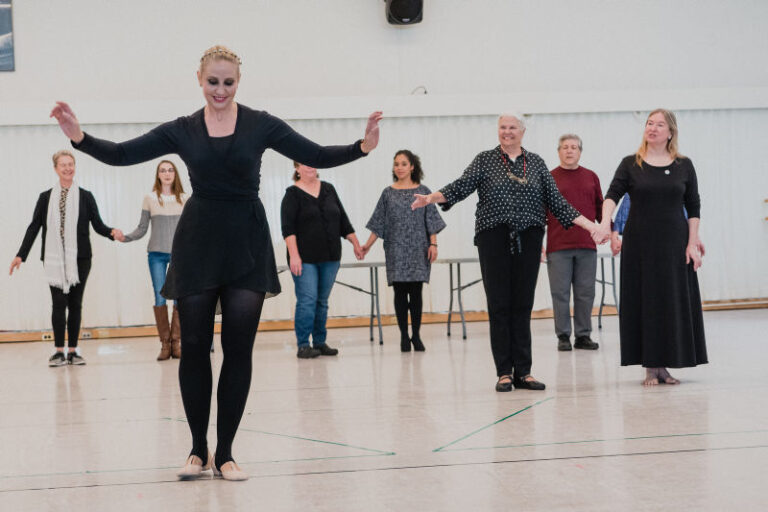
If you’ve responded this week to the recent murders of Black people by taking part in Blackout Tuesday and/or including a Black Lives Matter statement of solidarity, you may think that your role as a dance teacher or studio owner in this traumatic time is complete. But your Black students need your vocal, committed support, now, more than ever.
They may be feeling a host of emotions right now—traumatized, scared, drained—and as their dance teacher, you can offer them a special source of strength and support.
Here’s a short list of ways you can support your Black students right now.
Check in
Regardless of how often you currently meet with your students, or whether you’re meeting via a virtual space or in-person, take the time to check in with them. “There’s nothing wrong with asking, ‘Hey guys, how’re you doing?'” says Linda-Denise Fisher-Harrell, who teaches at Towson University and the Baltimore School for the Arts in Maryland. “And not just with Black students—with everybody. Say: ‘How is everybody? There’s a lot of stuff going on, a lot of protests. Is anybody feeling any kind of way that you would like to share or talk out?’ Give them that opportunity—an open space to talk.”
Be prepared for a long conversation. “Don’t expect to dance,” says Fisher-Harrell. “You have to feel it out and organically bring it out. That’s the only way we’re going to get to the heart of it, to talk it up, bring it up.”
Don’t be deterred by your students’ youth, either, says Anastasia Johnson, teaching artist and afterschool club manager at Dance Place in Washington, DC. “Regardless of their age, I know that they feel what’s going on,” she says. “I felt it when I was a kid, and sadly it becomes your norm. But it’s up to dance teachers to try and break down norms from the beginning. Make sure your Black students are seen, that they’re heard, that they’re acknowledged.”
But be sensitive to what your younger students need in these check-ins—they may also want a healthy complement of movement, says Fisher-Harrell. “It depends on the age level,” she says. “Sometimes they don’t need to talk—they need to move their bodies. And then I’ll say, ‘OK, let’s dance this out.'”
Practice communication
Checking in with your students during particularly turbulent times is a given, but practicing regular communication should be, too.
“In the university setting, my students are used to it,” says Fisher-Harrell. “They’re like, ‘Yeah, I have something to say,’ which is a beautiful thing, that they feel empowered to share. My high school kids, though, are at a place in their training where they’re hesitant to ask questions.” By continually talking with her high-schoolers about their feelings and reactions to current events, Fisher-Harrell has been able to cultivate an open line of communication. “Once we started the practice of it, then they were like, “Mrs. Linda, let’s go,'” she says. “They’re more free to express themselves. If you make it something that happens regularly, no matter the age group, they will feel compelled to speak.”
As your students’ dance teacher, you occupy a special place in their lives, as a mentor, a role model and hopefully a confidant. “We have a special connection to our kids,” says Johnson.”The more you practice communicating with and getting to know other people—connecting with them on a deeper level—the more you’ll start to practice outside the classroom, too.”
Create an *actual* safe space
“If you’re not providing a safe space, there’s something wrong,” says Fisher-Harrell. “Maybe this can be one of those ah-ha moments for you, to realize that your studio is not a safe space where your kids can outwardly express themselves and not feel othered.”
Cultivate a safe space by relying, in part, on your instincts. “You can feel tension when you walk into a room—you can feel when something’s not right,” says Fisher-Harrell. Reading the room and then taking the time to acknowledge why your students feel uncomfortable will, over time, reassure them that your studio is a place where they are protected and their opinions and identity are respected.
Don’t let “safety” translate only to your students’ physical well-being. “Many people have in their mission statements that they’re creating a safe environment, but are you really?” asks Johnson. “I don’t mean having a first aid kit in your studio. Are your students emotionally safe? Can they go to you as a leader and say, ‘Can you help me?’ I mean that kind of safety.”
Self-reflect
“This is a time for studio owners and teachers to reevaluate the way they run their classrooms and the way they interact with their students,” says Johnson. “Is this the most attention you’ve given to your Black students, because of what’s going on, or do you already give that attention, generally?”
Take the time to honestly answer hard questions for yourself. “What are your personal practices in your pedagogy? What are some things that you don’t even know show bias, that you do?” asks Fisher-Harrell. “It takes a lot of deep thought. Are you seeing your students of color? Do you treat your Black students the same way as everyone else?”
Don’t be afraid to be transparent about your self-reflection, either. “A great statement for a school to put out is to say, ‘We’re going to reflect on our practices to ensure equality and equity within our student body,” says Fisher-Harrell. “That’s a beautiful thing, if an institution can say, ‘We’re going to go back and reflect.'”

Linda-Denise Fisher-Harrell
Photo by Kanji Takeno, Courtesy of Fisher-Harrell
Speak out against racism
Hiding behind thoughts like, “It’s not my place”; “I’m only a dance teacher”; or “I don’t want to bring politics into the studio” is detrimental to all of your students, but especially to your Black students. To not speak out against racism is to perpetuate it. “That’s a disservice to your kids, your organization, and yourself, honestly,” says Johnson. “If you don’t want to deal with getting rid of racism, then you’re saying, ‘I’m OK with it.’ And that’s unacceptable.”
Put aside any discomfort you may have and remember that you are a role model. “Your leadership role for this generation is to help them grow and be better,” says Johnson. “Having uncomfortable conversations is necessary. Hiding—for you to say that you don’t think it’s your place or that you’re uncomfortable—will just let everything continue on and on and on.”
Implement changes
Consider offering other styles of dance at your studio besides ballet, lyrical and jazz. What about hip hop, or another form derived from the African diaspora? “Just because you’re not an expert in hip hop doesn’t mean you can’t get someone to come in and teach hip hop,” says Johnson. “And there are so many other cultural dance forms that you can offer.” Be conscious about not implicitly or explicitly suggesting to your students that hip hop and other forms are somehow less important than ballet.
Make sure your students know they may wear shoes and tights in bronze or brown—not just pink. Help them locate where to make these purchases, too. Offer your dancers visuals that reflect a diverse community. Posters, photos, books and shared videos should include bodies of all races—and shapes, sizes, genders and abilities.
Most importantly, don’t let the changes you make be temporary, or just an automatic response to events of the past two weeks. “Shifts in programming, shifts in leadership—it should all be a shift way beyond right now,” says Johnson.




